Small Groups
Greater access to your expert local guide for a more intimate and personalised experience.
$2795 + 3% booking fee + 5% Goods & Services Tax
The West Coast Trail offers sandy beaches, rugged cliffs, blowholes, caverns, caves, waterfalls, bogs, rainforest, lighthouses, abandoned settlements, shipwreck relics, native culture, whales, sea lions, eagles, and giant trees. With over 35 years of guiding on the trail—the longest of any company—our West Coast Trail itinerary includes stops to see things other companies can't offer. We point out historic and scenic wonders unknown to many hikers. Our pace allows time to adjust to the demands of the trail and to fully see and explore this magnificent Coastal Environment. Readings and anecdotal stories help the hiker fully appreciate the dramatic and colourful history of the events and people who were—and some still are—a part of this coastline. We have arranged a food drop for the half way point in our hike, thus reducing the weight carried by each hiker.
Our starting point is Nanaimo, on Vancouver Island, because it reduces travel times to and from the trailheads, getting you back to your hotel or transportation earlier on the last day. With an international airport, and service by two ferry terminals coming in from the two Vancouver area terminals, Nanaimo is more accessible than Victoria. We pick up from downtown hotels and the ferries, and from there, everything but travel food is provided (you provide your own personal gear).
We have been leading groups on the West Coast Trail longer than any other tour company on the trail, so we know the ins and outs, the history and the secrets, and have built a strong and respectful relationship with the First Nations on the trail.
Greater access to your expert local guide for a more intimate and personalised experience.
Thousands of delighted guests with many returning for more. Experience the Sea to Sky difference and find out why.
Enthusiastic and knowledgeable, our guides offer invaluable source of information on local culture, history and sights making your trip one of a kind.
Searching Availability...
Searching Availability...
**You will be responsible for food you may want at the Nitinaht Crab Shack
Vancouver Many of the major North American carriers fly into Vancouver or alternately, Seattle. Check with your travel agent for options. There is a bus service, Quick Shuttle , from Seattle's airport to hotels in Vancouver. These run daily and are reasonably priced. For more information, in North America, phone 1/800/665-2122 or 1/604/940-4428 – Fax 1/604/940-4429. Check the link regarding shuttles and other airport information.
Nanaimo Several bigger carriers fly into Nanaimo, usually after a change in Vancouver. Check with your travel agent for options that take you all the way to Nanaimo. Alternatively, the Horseshoe Bay ferry in West Vancouver sails to Departure Bay, Nanaimo. The Tsawwassen ferry terminal also has sailings to the Duke Point ferry terminal in Nanaimo.
Nanaimo The following hotels are recommended accommodations and are pick up locations.
Naniamo Pick up & Hotels
Pick up: Departure Bay, Duke Point Ferry Terminal, or the following Accommodations:
Days Inn Harbour View Nanaimo
Address: 809 Island Hwy South, Nanaimo, British Columbia, Canada, V9R 5K1
Phone (250) 754-8171
Website: www.nanaimohotel.com
Best Western Dorchester Hotel
Address: 70 Church, Nanaimo, British Columbia, Canada, V9R 5H4
Phone: (250) 754-6835
Website: www.dorchesternanaimo.com
Painted Turtle Guesthouse
Address: 121 Bastion Street, Nanaimo, British Columbia CANADA, V9R 3A2
Toll Free: 1-866-309-4432
Phone: (250) 753-4432
This is a rugged hike for some portions. The best boots for this kind of backpacking are solid-able to take rough talus slopes, water proof, and with a full, stiff shank for ankle support. If you get new boots, it is important to break them in before your trip to ensure that they are comfortable and to minimize the risk of blisters. It is also a good idea to bring a pair of comfortable sandals or water shoes for wearing around camp and for crossing streams or other bodies of water.
For a multiday backpacking trip in varied terrain, you will want a backpack with a capacity of at least 65-85 liters, depending on the size of your gear and the type of trip you are taking.
Some key features to look for in a backpack for this type of trip include:
Comfort: Look for a backpack with a comfortable and well-padded hip belt and shoulder straps, as well as a good ventilation system to prevent your back from getting too hot and sweaty.
Durability: Choose a backpack made from strong and durable materials, such as ripstop nylon, to withstand the rigors of the trail.
Weather resistance: Consider a backpack with a waterproof or water-resistant cover or built-in rain cover to protect your gear from the elements.
Load-carrying ability: Look for a backpack with a sturdy frame and good load-carrying capacity to support the weight of your gear.
Organization: Choose a backpack with plenty of pockets, compartments, and attachment points to help you keep your gear organized and easily accessible.
Size: Make sure the backpack fits you well and is the right size for your body and your gear.
It is also a good idea to try on a few different backpacks and load them with weight to get a feel for how they carry before making your final decision.
Hiking poles can be a helpful tool for a rugged backpacking trip, as they can provide additional support and stability on rough or uneven terrain. They can also help to reduce the impact on your joints and muscles by distributing some of the load to your upper body.
However, whether or not to use hiking poles is ultimately a personal decision, and it may depend on factors such as your physical abilities, the terrain you will be hiking on, and your personal preference. Some people find that hiking poles help them to maintain balance and reduce fatigue, while others prefer to hike without them.
If you do decide to use hiking poles, it is important to choose a pair that is comfortable, lightweight, and adjustable to your height. It is also a good idea to practice using them before your trip to get a feel for how they work and to ensure that you are using them correctly.
You can expect to carry up to 40 lbs, depending on the gear you bring. (about 18.2 kg)
We pack and prepare the food, usually about 7 to 9 lbs (3.2 to 4.0 kg) for this 9-day trip. We also share out the group gear. We are also supplying the tents, which typically weight 4 to 6 lbs., depending on whether they are double or single tents (double occupancy is standard, singles require a supplemental charge). Double tents are split between guests, so usually contribute about 3 lbs. to pack weight.
Altogether, expect to be given about 12 to 14 lbs. (5.4 to 6.4 kg). If you want your pack weight to be 35 lbs. (15.9 kg) or less, then your backpack and gear that you bring, along with 2 Litres of water, can only weigh up to 20 lbs. (9 kg).
This is a strenuous trip, with ladders and sections up and over headlands along the rugged coast. We do build in having a food drop along the way, and a lunch at the Crab Shack, so we carry less food than a normal 9-day trip. It is still strenuous, and you should expect to train and prepare for this hike.
Tips, or gratuities, are not mandatory. However, please consider what service is actually being given to you. While you might think that the company should just pay the guides better, it is not so simple. We do work in a competitive market, and pay rates are a function of the trip prices. If we could double prices, we would pay guides significantly better. At Sea to Sky, we have some of the better pay rates in the industry, and we are always pushing our competitors to increase pay rates for guides, but there is only so much we can do. Guides are seasonal workers. They shift off of their summer season to winter activities, or fill in with retail work, which is usually little more than minimum wage, often to periods of no work between seasonal jobs. It is a hard job, and wearing on the body.
The guides carry most of the group gear, so they have heavier loads than you have, all for you, because they would not be carrying much of the extras on a personal trip. Your guides are teaching you, helping you through challenges, cooking for you and serving you your meals, providing a safety envelope for you, and if you have a really good guide, they are filling you up with a deeper experience of being in the place you are visiting by telling you about the flora, fauna and history of the place.
So, how much should you tip your guides?
If you ate every meal out in a day, at a good, but low-cost restaurant, you would probably tip between $10 and $15 per day. If you were travelling and visiting a city and ate all your meals out, this is about how much you would tip for the day, low end. I would submit that the guides are feeding you all three meals in a day, AND serving you in so many more ways. That makes $10-$15 a day a minimum consideration, really. 10% to 15% of a trip price has been another rule of thumb that has been used. If your trip price is $2000, then $200 to $300 split between the guides is reasonable, and falls within that standard. Like most humans, guides are motivated when they are recognized and valued.
Your circumstances matter. If you are a student and clearly struggled to put together the cost of the trip, or have other circumstances that limit your ability to tip, guides understand and honour your appreciation, no matter what the size. However, if you have a large income or high net worth and means, a small tip might be a slap in the face. If you have means and you clearly and vocally appreciated the guides and all they did, and then leave a $50 tip after a 7 to 9 day trip, that amount would probably be insulting. If you have a fairly large income or net worth, you likely spend it on higher end restaurants, and maybe higher cost wine, drinks or desserts. You might even give a $50 tip for a dinner meal out-for ONE meal, so just consider your ability to tip and the level of service you received over the whole trip.
The largest tip any of our guides has received from one person is $1,500.00 for a 9-day trip. This was highly unusual, and was because we went way out of the way to replace her boots in the middle of the trail because her boots were falling apart, and was on top of paying for the boots and the transport out to the trail. That was extraordinary service, and an extraordinary tip. On average, guides usually receive about $75 to $125 from each guest for each guide.
At Sea to Sky, we also split the tips between the lead and assistant guides, and proportionally with any drivers. We have a strong culture of teamwork and both the lead and assistant guides play essential roles for you, so we ensure both share equally in the tips for the trip. Tips are not shared or taken by owners and managers not on your trip, unless you send it separately and specify it is for service before or after a trip.
| Item | Price (per day) |
|---|---|
| Backpack Rental | $6.50 |
| Sleeping Bag Rental | $6.50 |
| Thermarest Rental | $2.25 |
| Gaiter Rental | $1.67 |
| Hiking Poles Rental (pair) | $2.25 |
| Single Tent Supplement | $6.50 |
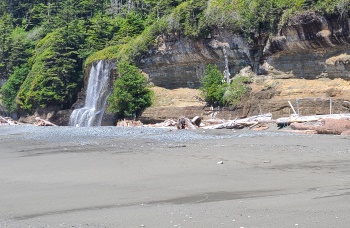
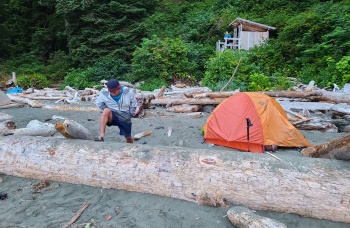
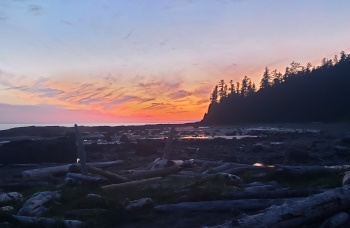
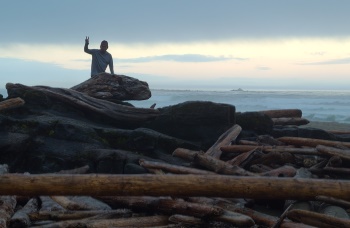
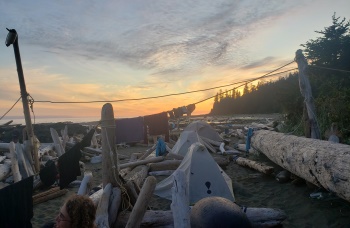
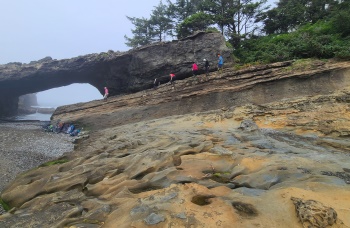
For any wilderness adventure, "layering" is one of the most critical concepts.
Layering clothing can have several advantages:
Temperature regulation: Layering allows you to adjust your level of warmth by adding or removing layers as needed. This can be especially useful in unpredictable weather or in environments with fluctuating temperatures.
Comfort: Layering can help you stay comfortable in a range of temperatures and activities. For example, if you're going for a hike, you can wear a base layer to wick sweat away from your skin, a mid layer for insulation, and a outer layer to protect against wind and rain.
Versatility: Layering allows you to mix and match different pieces of clothing to create different looks and adapt to different situations.
Style: Layering can add depth and interest to your outfit, allowing you to express your personal style and create a polished look.
Protection: Layering can also provide protection against the elements, such as wind, rain, and cold temperatures.